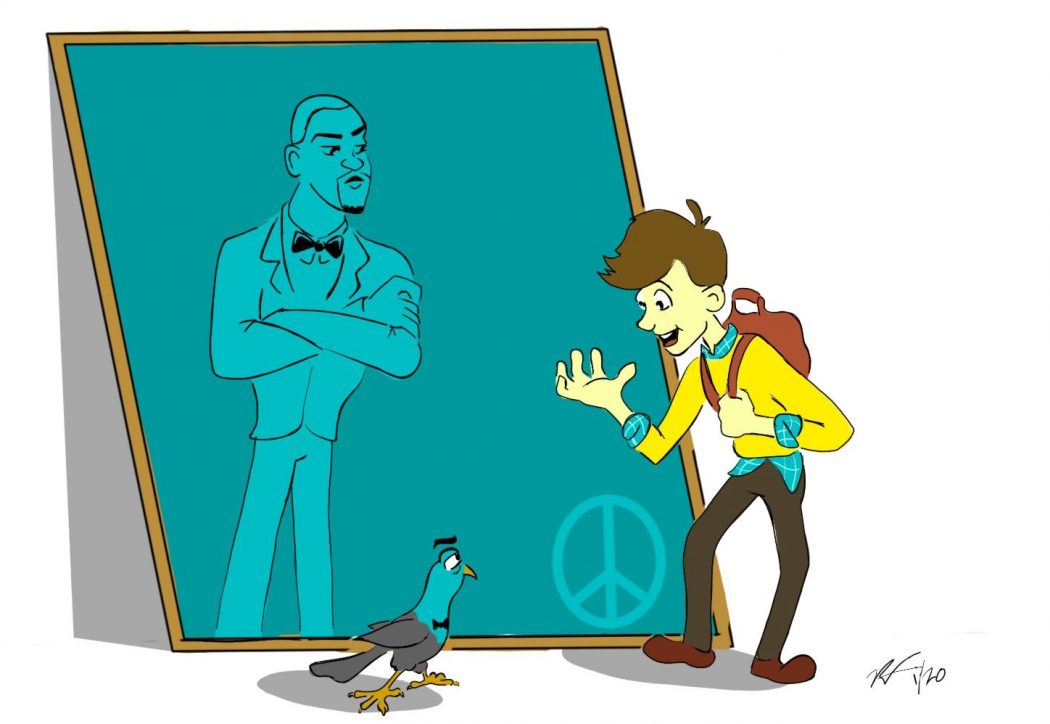Opinion: A Creative Solution Presented in “Spies in Disguise”
Over Christmas break I saw the new movie “Spies in Disguise” with my family. The movie had several important messages for its audience, but the one that stuck out most to me was the theme of nonviolence.
The uniquely plotted “Spies in Disguise” brings our overly violent world into question and offers a new perspective to the problem of violence, both within our entertainment media and in the real world.
Could a peaceful alternative be successful in resolving differences instead of relying on the wide-spread violence depicted in our media?
Violence is pervasive in pop culture and everyday life. A report from the American Academy of Pediatrics in 2013 found violent films have doubled since 1950. On top of that, the amount of gun violence present in PG-13 films has tripled since 1985. Violence has become commonplace on the tv screen and the movie screen.
The highest grossing film ever is “Avengers: Endgame,” followed by “Avatar,” “Star Wars: Episode VII,” “Avengers Infinity War,” “Jurassic World,” “Avengers,” and “Furious 7″ in the top 10. Violent battle scenes seem to sell movie tickets better than anything else. For films like “Avengers: Endgame,” violence makes the movie and dominates the narrative and theme.
However, I would argue that a story can be interesting without intense scenes of violent action. Writers are limiting themselves to simplified stories and overdone themes of violence because it’s easy. It’s difficult to write a story that combats violence with peace, which is exactly what “Spies in Disguise” achieved.
A significant argument made by Will Smith’s character, Lance Sterling, was that it’s okay to be violent when fighting the bad guys. This is a prominent position made in film and in our world today: it’s okay to be violent and aggressive when we’re fighting the bad guys. But what separates the good guys’ violent actions from the bad guys? I believe, as the movie demonstrated, difficult situations can be handled through the use of communication and discussion. Aggression is not a necessity and neither is violence.
I think on-screen violence should not be our number one source of entertainment. We should support the writers who create meaningful plots or successful stories. Academy Award winning writer, director and producer Martin Scorsese feels the same and argues that the art of cinema is disappearing. Scorsese states, “Many films today are perfect products manufactured for immediate consumption. Many of them are well made by teams of talented individuals. All the same, they lack something essential to cinema: the unifying vision of an individual artist. Because, of course, the individual artist is the riskiest factor of all.”
In other words, stories are more valuable if they are written well and have meaningful plots that rely on art rather than excessive violence. Powerful themes can be created through the art of cinema. Instead of the horrific destruction and overwhelming reconstruction that takes place during or after a war, what if we started telling stories of friendship, family, empowerment, teamwork, self-worth and growth without extended battle scenes? What would happen if the heroes decided to win the battle like Walter Beckett and Lance Sterling did in “Spies in Disguise?”
Does the violence in our movies affect the way we interact with each other and the world around us, or does the violence in real life influence the content of movies?
I think we should seek entertainment that doesn’t glorify violence and magnify differences but provides ideas and solutions to get along. The need for our society to come together is getting stronger by the day; we can come together by remembering that all lives matter. As Walter Beckett says, “There’s a better way!” We don’t have to use violence, even when we’re catching the bad guys.
Emily White is a junior studying English and broadcast journalism. She is from Kaysville, Utah, and spends her time reading, writing and listening to podcasts.
Feature graphic made by Keith Wilson. The opinions in this article do not necessarily reflect his own.

